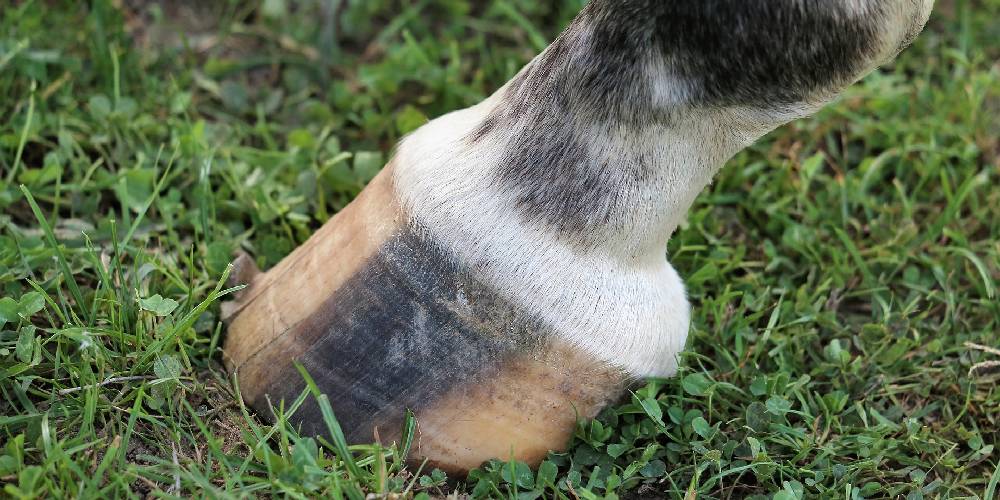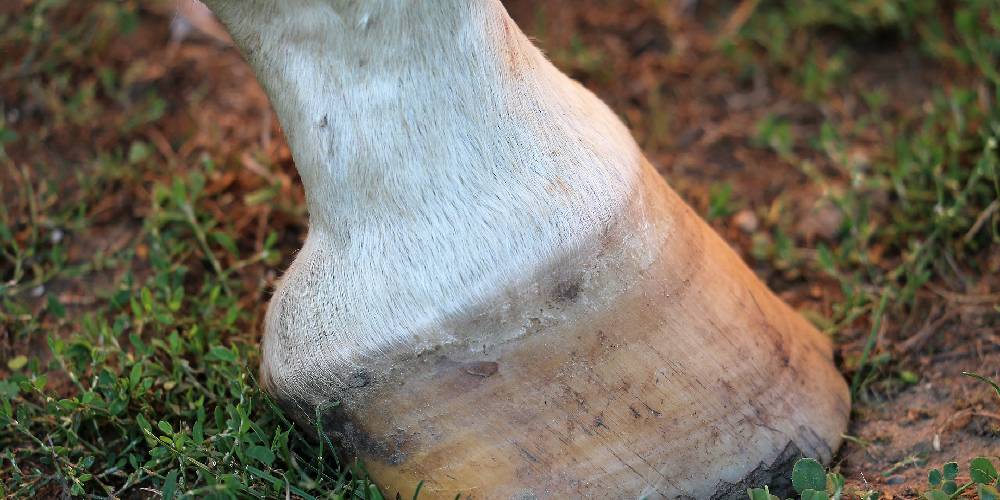Looking around at horses, you may notice that there are so many different colors, patterns, and markings decorating their bodies. Horses have special white markings on their faces and legs that are unique to every horse. This is a detailed guide to navigate you through all the different horse markings.
What Are The Different Face & Leg Markings That A Horse Can Have?
There are many different face and leg markings that a horse can have and many horses can have both face and leg markings. The different face markings include star, stripe, blaze, snip, white face, and interrupted stripe. There can even be a star and snip connected by a stripe. The get markings include coronet, half pastern, pastern, half cannon, and over the knee. The more common names for the leg markings are socks, which are the lower down markings under the knee, and stockings, which are large long white markings on the legs that extend above the knee.
Facial Markings Of Horses
Star

The star is the most commonly known marking on a horse. A star is basically a white mark on the horse’s forehead that can range in size from the size of a quarter to nearly the horse’s entire forehead.
A star can be any shape as well, so no two stars are the same.
Snip

The snip is a white marking in between the horse’s nostrils on its muzzle. The snip, like the star, can be any shape and can range in size from the size of a penny to nearly covering their muzzle.
Like the star, snips can be any shape and size and no two snips are the same.
Stripe

A stripe is just as it sounds: a white stripe down the horse’s face. The stripe usually starts at the forehead and goes down towards the muzzle. Sometimes the stripe connects a star and a snip. This unique marking is what my horse Bronze had. He had a little star and a little snip that were connected by a faded stripe.
Some stripes can end before they hit the muzzle. This can often be seen as a star attached to a stripe.
Blaze

A blaze is a thick white line down the front of a horse’s face. Often, the blaze is about as wide as the bridge of the horse’s nose. Blazes usually start just below the forelock and end just below the nostrils.
White Face

The white face facial marking is one of the most rarely seen in horses. This marking is basically where nearly the horse’s entire face is white. Commonly, horses that have a white face also have blue eyes.
Interrupted Stripe

An interrupted stripe is basically a stripe that has breaks in it. There might be a star, stripe, and snip all in one face marking, but to be considered an interrupted stripe, they can not be connected.
Leg Markings Of Horses
Coronet

The coronet is a part of the horse that lands just above the hoof. A coronet leg marking would be a thin white stripe along the coronet band above the hoof.
This leg marking is one of the least commonly seen in horses.
Half Pastern

The pastern is the bone just above the horse’s hoof and just below the fetlock joint. A half pastern marking is a white marking that reaches to just halfway up the pastern.
Pastern

A pastern marking is where a white marking covers the entire pastern. To be considered a true pastern marking, the white hairs can not reach to the fetlock or above.
Fetlock

A fetlock marking is a white marking that reaches to the fetlock joint. This marking is often confused with a pastern marking or a half cannon marking. This is because the cannon is right above the fetlock and the pastern is right below the fetlock.
Half Cannon

The half cannon markings are basically markings that reach halfway up the horse’s cannon bone. This is one of the most common horse leg markings. The half cannon markings can reach up to right below the knee and right above the fetlock.
Over The Knee

Over the knee, markings are tall white markings that are not commonly seen. These are often known as stockings because of how big they are.
Stocking
Most people refer to large horse leg marking that covers most of a horse’s leg as a stocking. The name stocking is a general term that usually means a marking that reaches over the knee or to the horse’s hock.
Stockings on the back legs usually reach just below the hock, but they can reach just above the hock and the middle of the gaskin as well.
Sock
A sock is basically a small or average white leg marking on a horse. Socks are just any leg markings that don’t reach over the knee. Like the stocking, the sock is just a general term used to describe the marking on a horse’s leg.
My horse, Bronze has three socks, two on his back legs and one on one of his front legs. They are actually all half cannon markings that most people would refer to them as socks.
Can Roan Or Patterned Horses Have Leg Or Face Markings?
Yes they can have white markings! Roan horses and pinto horses can have white markings as well even if they seem to be part of the horse’s normal coat pattern.
Dark Horse Markings
Common in dun horses are zebra stripes and dorsal stripes.
Zebra Stripes
Dun horses often have stripes on their shoulders. These stripes are also common in donkeys and burros. The stripes not only an be seen on the shoulders, but in some cases can appear on the horse’s gaskins and hindquarters.
Dorsal Stripes
Dorsal stripes are seen on dun horses, bay horses, and some buckskin horses. a dorsal stripe is basically a dark stripe that goes along the top of the horses back.
My horse bronze has a faint dorsal stripe that appears when he sheds out his winter coat.

